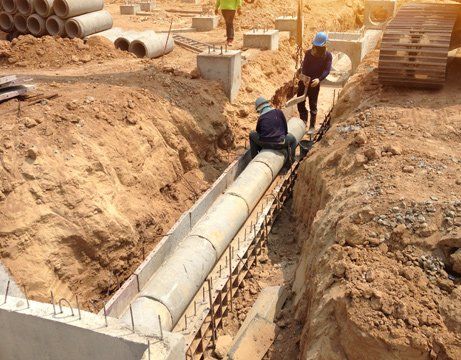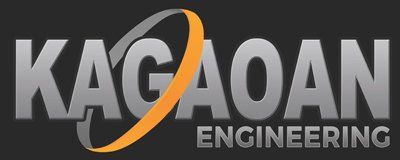Drainage System Consultants - NYC, Manhattan, The Boroughs, Nassau County, Suffolk County, Long Island, and New Jersey - Kagaoan Engineering

Geotechnical Drainage System Consulting
Kagaoan Engineering employs geotechnical engineers, designers, architects, and other professionals to team up with civil and private teams. These partnerships address problems with runoff, drainage, and water collection during and after significant rain events. Using irrigation systems with recirculation units, creating unique sewage systems, and modeling ground layers for project leaders are a few ways these experts help builders add appealing features and reduce flooding in communities. Keeping water quality levels consistent is another area of expertise where our geological teams excel.
Contact us
for free consultation.
Flood risk assessments and surface water drainage routes are two primary areas where geological engineering teams can perform tests, offer expert opinions, and draw conclusions regarding subsurface stability. These professionals help beautify communities with water routing systems that are appealing and more closely mimic natural habitats. Many municipalities and governments are putting regulations into law requiring businesses to build Sustainable Urban Drainage Systems, or SUDS to reduce the environmental impact of construction and impermeable lots. Stormwater management is a huge priority for areas seeing increasing flood risks.
From taking water samples to designing drainage systems and predicting the impact of installing water collection systems, geological engineering teams offer insight, expert opinions, and data reporting. These teams perform groundwater studies, take test samples, and model systems for civil engineers, builders, and property owners. Design is another aspect of the job for these technical workers. Helping create beautiful parks, ponds, and soakways allows cities and states to provide functional drainage systems that are appealing and improve the community.
Determining Flood Potential
When new businesses are in the works and construction teams are ready to build master-planned communities, high-rise apartments, and new recreational complexes, it is important to assess where rainwater will go. Knowing the direction of overflow water and how long it will take for the moisture to flow through the subsurface layers can help government officials predict where and when flooding may occur. Geological experts might use bore hole samples to discover sedimentary layers and impervious clay sections or bedrock. Sustainable water systems include:
- Rain gardens
- Ponds
- Swales
- Infiltration basins
- Filter strips
- Soakways
- Porous pavements
Improving Athletic Fields and Complexes
Creating recreational spaces involves detailed planning and a deep understanding of ground layers, soil types, and how water flows through various mediums. Having advanced knowledge of how the soil or ground surfaces will react with various precipitation like snow, ice, and rain is crucial to planning community spaces. Climate changes greatly affect water drainage, so accurate predicting is necessary when building large sports complexes.
Balancing Beauty and Function
Whether a project involves building a bridge or a retaining wall, rainwater will affect these structures. The goal of geotechnical consulting teams is to find an appropriate mix of permeable structures to incorporate between solid areas like parking lots. Planning the right combination of porous ground areas where the water can run off from the solid structures and seep into the soil is necessary for providing enough drainage for new construction and renovations.
Benefits of Using Kagaoan Engineering Geotechnical Drainage System Consultants
- Creating biodiversity
- Implementing SUDS priorities
- Balancing design and building expansions
- Improving drainage
- Reducing flooding in areas prone to oversaturation
- Redirecting the flow of surface water
- Developing underground water runoff systems
- Predicting climate change needs
- Better filtration systems to improve water down the line
Predicting Future Costs and Development Needs
Geotechnical engineers can determine whether existing sites and new constructions will encounter issues with drainage in the future. Ground sampling, site modeling, and computer programs can provide insight and help these professionals offer valuable opinions about city planning designs and project development. Incorporating alternate discharge zones and better filtration systems can protect water sources for municipal drinking sources.
Soil runoff can lead to potential problems when manufacturing plants and businesses using industrial chemicals do not plan enough naturally draining areas for rainwater. To prevent flooding and possible water contamination downstream, geological engineers use soil samples, surface maps, and known flood routes to create environmental safety plans for businesses, developers, and local governments.
When your company needs geological support to determine the extent of flooding issues, our experts at Kagaoan Engineering have the expertise and skills to investigate the problem fully and provide a comprehensive report. Our technologically advanced equipment is highly accurate allowing our team to test bore sites, sample groundwater, and provide soil analysis. With years of experience and a comprehensive team, we can discover the source of flooding, provide alternative ground systems, and develop predictions for future site needs.
We help large and small businesses and work in the public and private sectors. Assisting developers with sustainable options for rainwater drainage and underground runoffs are a couple of the ways we can offer help to developers and engineering firms. Designing sustainable and resourceful drainage systems requires an extensive knowledge of ground capacities, permeability, and climate changes. We develop plans that incorporate natural systems where pavement, asphalt, and buildings block natural drainage paths. To find out more about drainage system requirements or to inquire about help from the leading geotechnical team at Kagaoan Engineering. We look forward to working with your staff to meet local regulations and provide beautiful and functional water direction systems on any level.
Please contact us
today for a free consultation.
About Kagaoan Engineering
Kagaoan Engineering brings a unique approach to collaborating with the clients, and other professionals to arrive at the most innovative solutions to the most complex challenges encountered in construction.

